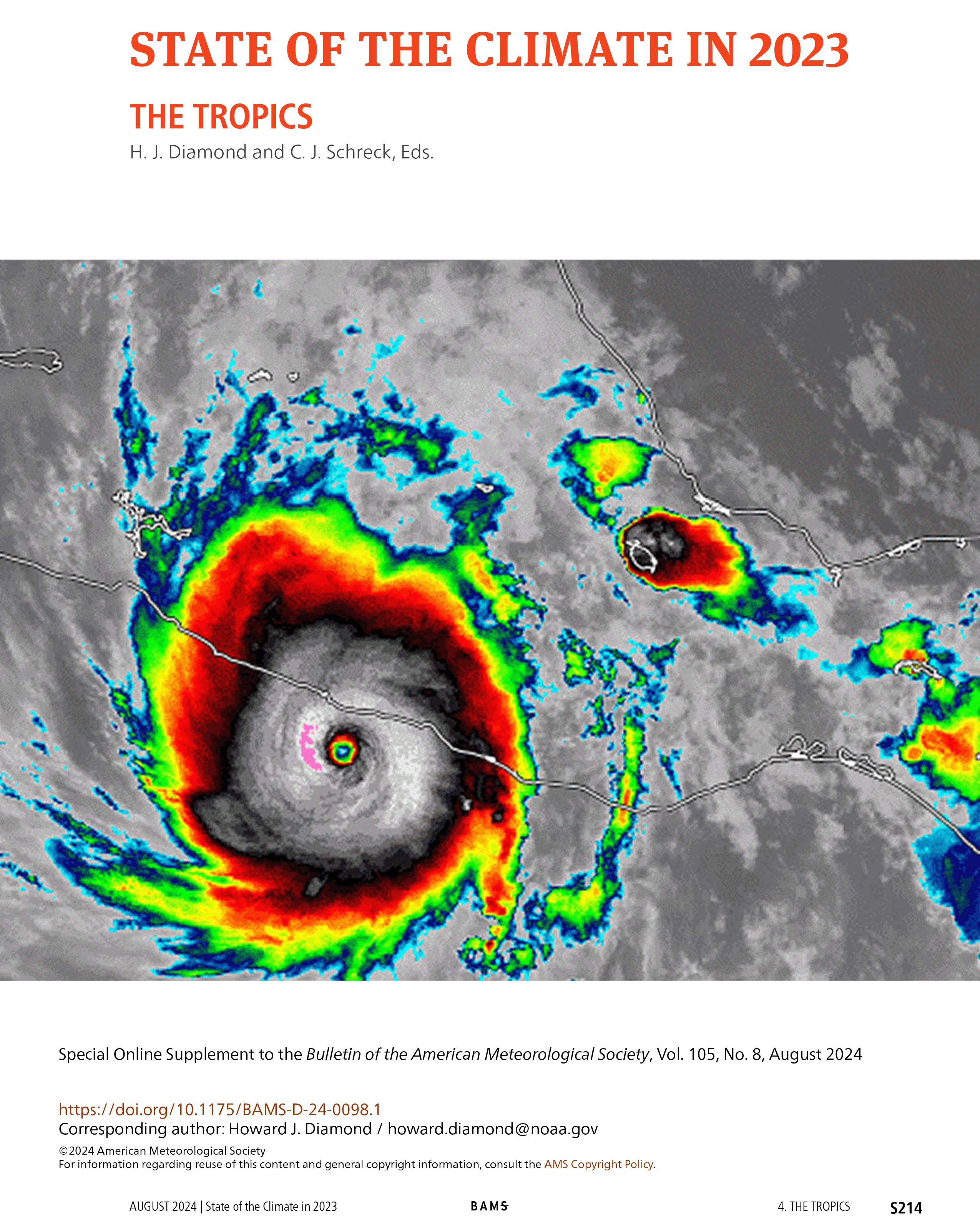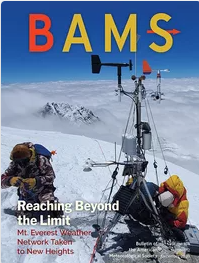State of the Climate in 2023: The Tropics
August 22, 2024
ARL Atmospheric Sciences and Modeling Division Director Dr. Howard Diamond was lead author on this year’s State of the Climate Tropics Chapter published by the American Meteorological Society.
This annual publication is compiled by NOAA’s National Centers for Environmental Information and is based on contributions from over 600 scientists from around the world. It provides a detailed update on global climate indicators, notable weather events, and other data collected by environmental monitoring stations and instruments located on land, water, ice, and in space. This is the 34th issuance of the annual assessment now known as State of the Climate, published in the Bulletin since 1996. As a supplement to the Bulletin, its foremost function is to document the status and trajectory of many components of the climate system. However, as a series, the report also documents the status and trajectory of our capacity and commitment to observe the climate system. The full report link can be found here and the Tropics Chapter link can be found here.

75 years of history with the Air Resources Laboratory
December 1, 2023

Cover of BAMS Volume 104: Issue 12
Authored by Ariel Stein, Bruce B. Hicks, LaToya Myles and Margaret Simon, the article NOAA’s Air Resources Laboratory – 75 Years of Research Linking Earth and Sky: A Historical Perspective was published in the Bulletin of the American Meteorological Society.
For over 75 years, the National Oceanic and Atmospheric Administration’s Air Resources Laboratory (NOAA ARL) has been at the forefront of federal meteorological and climate research. As the Special Projects Section (SPS) of the U.S. Weather Bureau (USWB), the laboratory pioneered the development of atmospheric trajectory modeling, initially used in studies related to nuclear weapons following World War II. Model development was guided by observations following weapons tests, assisted by later experiments using a wide variety of atmospheric tracers. Today’s familiar Gaussian plume dispersion model, previously in nascent form, was developed and promoted with ARL research, as was the much later and widely used HYSPLIT model. Much of ARL’s early research was focused on the challenges presented by the complex terrain surrounding nuclear installations, often addressed with high-spatial-resolution meteorological measurements, atmospheric tracers, and site-specific models. ARL has since extended boundary layer research to increasingly complex landscapes, such as forests, agricultural lands, and urban areas, and has expanded its research scope to air quality, weather, and climate applications based on the knowledge and experience developed throughout its long history. Examples of these research endeavors include the establishment of the U.S. Climate Reference Network, fundamental contributions to the development of the National Air Quality Forecast Capability, and foundational participation in the National Atmospheric Deposition Program. ARL looks forward to continuing to refine scientific understanding from field experiments, including coupling ground-based experimentation with modeling, and sustained observations, in order to facilitate the transfer of knowledge into practical applications of societal relevance.
ARL Publications
The publication lists are for the Fiscal Year. From 2008 through 2020, the publication lists are for the Calendar Year.
*2007 includes end of calendar year publications.
All lists are in Portable Document Format (PDF)
- 2024 Publications
Full List of Publications by Calendar Year 1991-2015 (PDF)

